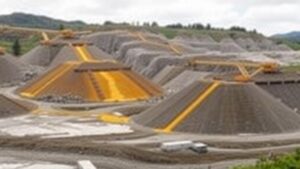Exploring Myths and Legends of Successful Dowsing in Prospecting
Exploring Myths and Legends of Successful Dowsing in Prospecting
Dowsing, often referred to as water witching or divining, is a practice that involves using a forked stick, rods, or pendulums to locate hidden resources underground, including water, minerals, and even treasure. While the art of dowsing has attracted both skeptics and enthusiasts, it remains a topic of intrigue in the realms of prospecting and geology. This article aims to explore the myths and legends surrounding dowsing, investigate its historical context, and assess its practical applications in modern prospecting.
The History of Dowsing
The origins of dowsing trace back thousands of years, with depictions found in ancient Chinese texts and European folklore. Historically, dowsing was primarily used to locate water sources, which was vital for agriculture and survival. The 16th-century German scholar Georg Wilhelm von der Linde popularized the method in Europe with his writings that suggested its efficacy in finding minerals and resources. Dowsings evolution into a widely accepted practice can be attributed to numerous anecdotal successes throughout history.
Common Myths Surrounding Dowsing
Despite its long-standing history, dowsing is surrounded by a multitude of myths that permeate public perception. Some of the most prevalent myths include:
- Dowsing is purely intuitive: Many believe that successful dowsing relies solely on inherent talent. While some practitioners may have a natural affinity for dowsing, training and experience also play significant roles in enhancing one’s effectiveness.
- Dowsing always yields positive results: The belief that dowsing is infallible is misleading. Many studies report varying degrees of success, with some practitioners achieving accuracy rates similar to random chance.
Scientific Scrutiny and Evidence
Scientific examination of dowsing has produced mixed results. A notable study conducted by the National Research Council in 1980 revealed that dowsers performed no better than chance when searching for underground water in controlled tests. Plus, researchers argue that any perceived success may often result from the dowsers subconscious cues rather than any mystical ability.
For example, a survey of more than 200 dowsers found that only about 15% could consistently locate water sources with high reliability. This statistic suggests that while dowsing is practiced by many, its efficacy may be significantly exaggerated by anecdotal accounts and confirmation bias.
Practical Applications of Dowsing in Modern Prospecting
Despite skepticism, dowsing continues to find a place within certain circles of prospecting. Some contemporary prospectors incorporate dowsing into their exploration toolbox, particularly in rural areas lacking advanced geological surveying technology. While it may not replace established scientific methods, dowsing is sometimes viewed as a supplementary tool.
- Case Study: Water Well Dowsing – In arid regions where traditional drilling methods are expensive, some farmers still employ dowsers to locate optimal water sites. While results can vary, some users report successful outcomes that align with anecdotal evidence.
- Mineral Detection – Certain prospectors claim to have identified precious metal deposits through dowsing techniques. While these claims are often met with skepticism, individual accounts of striking gold or silver augment the romanticism surrounding dowsing in the prospecting community.
Ethical Considerations and Responsible Practice
The practice of dowsing, particularly in prospecting, raises ethical questions. Environmental concerns are paramount; for instance, dowsing for water in eco-sensitive areas necessitates a thorough understanding of local ecosystems to prevent over-extraction and environmental degradation. Ethical prospectors should prioritize sustainability and sound practices alongside any dowsing efforts.
Conclusion: Myths, Legends, and Realities
In summary, the myths and legends of dowsing in prospecting present a fascinating study of human belief, intuition, and resourcefulness. While extensive scientific scrutiny casts doubt on the validity of dowsing, its continued practice evokes curiosity and highlights the importance of traditional knowledge systems. For those interested in prospecting, dowsing can serve as an intriguing complement to empirical techniques, but it should be approached with a critical perspective.
Actionable Takeaways
- Consider historical and anecdotal context when evaluating dowsing.
- Acknowledge the limitations and potential biases in personal experiences with dowsing.
- Always prioritize ethical practices and environmental sustainability in any prospecting endeavors.



